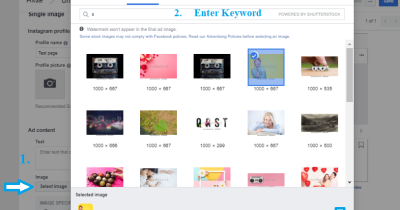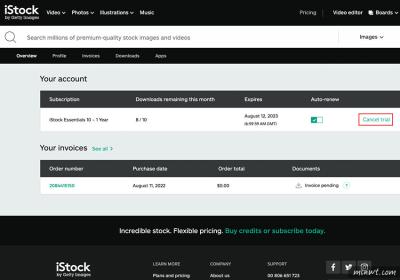If you’re passionate about photography, illustration, or digital art, becoming a Shutterstock contributor can be a fantastic way to turn your creative skills into a steady income. Shutterstock is one of the biggest stock photo platforms out there, connecting millions of buyers with talented creators like you. In 2025, its opportunities are more diverse than ever—think new markets, expanded content types, and innovative ways to showcase your work. Whether you’re just starting or looking to grow your portfolio, understanding how to navigate
Understanding Shutterstock’s Submission Guidelines and Requirements

Before you start uploading your images or videos to Shutterstock, it’s crucial to familiarize yourself with their submission guidelines. They’re designed to ensure that only high-quality, legal, and market-ready content makes it onto the platform. Let’s break down the key points so you can confidently prepare your submissions:
1. Content Quality and Technical Standards
- Resolution: Images should be at least 4 megapixels; videos should be HD (1920×1080) or higher.
- Focus and Clarity: Your work must be sharp, well-exposed, and free of noise or distracting artifacts.
- Color and Lighting: Use natural or well-balanced lighting, and avoid overly harsh shadows or color casts.
2. Content Restrictions and Legal Requirements
- Model Releases: For recognizable people, you need signed model releases. No releases are required for anonymous or non-identifiable subjects.
- Property Releases: If your images feature private property or branded products, proper releases are necessary.
- Copyrighted Material: Do not upload images containing copyrighted logos, artwork, or other protected content unless you have permission.
3. Content Diversity and Originality
Shutterstock values fresh, original content that fills gaps in their library. Avoid submitting overly similar images or content that’s widely available elsewhere. Think about unique angles, concepts, or themes that can stand out in the marketplace.
4. Metadata and Keywording
Accurate titles, descriptions, and keywords are vital for discoverability. Use relevant, specific terms without keyword stuffing. Proper metadata helps buyers find your work effortlessly.
5. Submission Process and Review
Once you upload your content, Shutterstock’s review team will evaluate it based on quality, legal compliance, and originality. This process can take a few days. If your content is rejected, don’t be discouraged—review the feedback, adjust your work accordingly, and try again!
By understanding and adhering to these guidelines, you set yourself up for success as a Shutterstock contributor in 2025. Keep quality top of mind, stay updated on platform policies, and continually refine your skills. Happy uploading!
Creating High-Quality and Marketable Content for Shutterstock

Alright, let’s talk about the heart of your success on Shutterstock — creating content that not only looks great but also sells. Think of your portfolio as a storefront: the better the window display, the more people will stop and take notice. The key here is to strike a balance between your creative passion and what buyers are actually searching for.
First things first, quality over quantity. Shutterstock’s reviewers are pretty strict about image standards, so make sure your photos are sharp, well-exposed, and free of noise or distractions. Use good lighting — natural light is often best, but if you’re shooting indoors, invest in some decent lighting equipment.
Next, focus on marketability. Do some research on trending topics, seasonal themes, and popular categories like business, lifestyle, technology, or travel. Browse the Shutterstock marketplace and see what’s popular. Pay attention to the style and composition of top-selling images. If you notice a lot of minimalistic, clean photos, try to adapt that style with your own twist.
Remember, authenticity sells. Capture genuine moments and real expressions. Stock buyers often look for relatable images that can be used in diverse contexts. Also, consider creating a diverse portfolio — people want a wide range of options, from diverse models to different settings and concepts.
Here’s a quick checklist for creating marketable content:
- High resolution and sharp focus
- Good lighting and color balance
- Clean, uncluttered backgrounds
- Relevant, timely themes
- Authentic, relatable subjects
- Unique perspectives or concepts
Finally, think about the story your images tell. Buyers are often looking for visuals that can complement their projects, so aim for images that evoke emotion, convey a message, or solve a visual problem. Keep experimenting, stay inspired, and always look for ways to improve your craft.
Optimizing Your Images for Better Visibility and Sales

Once you’ve created some fantastic images, the next step is making sure they stand out in the Shutterstock marketplace. Optimization isn’t just about SEO on websites; it’s about making sure your images are discoverable by the right buyers. Here’s how to get your visuals noticed and boost sales:
1. Use Descriptive and Keyword-Rich Titles
Your image titles should be clear, concise, and include relevant keywords. Instead of vague titles like “Beautiful Scene,” go for something specific like “Sunset over Mountain Lake with Reflection.” Think about what a buyer would search for — be precise and descriptive.
2. Write Detailed and Relevant Descriptions
Description is your chance to add context. Mention the main elements of the image, the mood, potential uses, and any relevant details. This helps Shutterstock’s algorithm understand your image better, improving its chances of appearing in search results.
3. Select Accurate and Strategic Keywords
Keywords are king in stock photography. Use all relevant keywords related to your image — include concepts, colors, locations, emotions, and objects. Use both broad and specific keywords to cover a wide search range. Don’t overstuff; keep it relevant.
| Keyword Type | Examples |
|---|---|
| Broad | business, travel, nature |
| Specific | mountain hiking, office team meeting, urban skyline |
| Emotional | happy, stressed, inspired |
4. Choose Appropriate Categories
Select the most relevant categories for your images to help buyers find them easily. Proper categorization improves visibility in relevant searches.
5. Maintain Consistency and Quality
Consistently uploading high-quality, well-optimized images builds your reputation as a reliable contributor. Keep an eye on trending topics and update your portfolio accordingly.
Finally, track your performance. Use Shutterstock’s contributor tools to see which images are performing well and analyze why. This feedback loop helps refine your content creation and optimization strategies for even better results in 2025 and beyond.
Building a Consistent Submission Schedule and Portfolio
Alright, let’s talk about the importance of consistency when it comes to submitting your work to Shutterstock. Think of your portfolio as your digital storefront — the more active and varied it is, the more attractive it appears to potential buyers. Plus, a steady flow of new images keeps your portfolio fresh and relevant in Shutterstock’s eyes.
So, how do you go about building a consistent submission schedule? Here are some tips:
- Set Realistic Goals: Decide how many images you can comfortably upload each week or month. Maybe it’s 5 images a week or 20 a month — whatever fits your schedule.
- Create a Content Plan: Plan your shoots and editing time ahead of time. For example, dedicate specific days to shooting, editing, and uploading.
- Maintain Quality and Variety: While consistency is key, never sacrifice quality. Mix up your content types — photos, vectors, illustrations, or videos — to reach a broader audience.
- Track Your Progress: Use a simple spreadsheet or project management tool to monitor how many files you’ve uploaded, accepted, rejected, or need improvements on. This helps stay motivated and organized.
Now, about building your portfolio. Think of it as your personal highlight reel. Focus on a niche or a style you love — whether that’s travel photography, food shots, or creative illustrations — and develop your unique voice within it. As you upload regularly, you’ll notice patterns emerging: your best-performing images, popular themes, and your own growth as a creator.
Remember, quality trumps quantity. Upload high-resolution images with excellent composition, proper lighting, and clear focus. Use relevant keywords and descriptive titles to make your work discoverable. Over time, a well-curated, consistently updated portfolio will attract more buyers and open doors for better sales opportunities.
Engaging with the Shutterstock Contributor Community and Resources
One of the best ways to grow as a Shutterstock contributor in 2025 is to tap into the vibrant community and the wealth of resources available. You’re not alone in this journey, and connecting with others can provide invaluable insights, motivation, and even collaborations.
Start by exploring Shutterstock’s own contributor forums and social media groups. These platforms are packed with fellow photographers, illustrators, and videographers sharing tips, success stories, and answering questions. Don’t be shy — ask for feedback on your work or advice on trending topics. Most community members are happy to help newcomers get started and thrive.
Additionally, take advantage of educational resources offered by Shutterstock and other platforms:
- Webinars and Workshops: Shutterstock often hosts webinars on topics like keyword optimization, recent trends, and portfolio building. Attending these can give you a competitive edge.
- Blogs and Articles: Follow industry blogs for tips on improving your photography skills, editing techniques, and understanding market demand.
- Online Courses: Platforms like Skillshare, Udemy, or LinkedIn Learning offer courses tailored for stock contributors, covering everything from technical skills to marketing.
Beyond formal resources, consider subscribing to newsletters or following influential contributors on social media. They often share insights into what’s trending, behind-the-scenes looks at their workflow, or new ideas for projects.
Finally, don’t forget the power of feedback. Share your work within the community and be open to constructive criticism. This helps refine your skills and increases your chances of acceptance on Shutterstock. Building relationships within the community can also lead to collaborations or referrals, expanding your reach even further.
In summary, engaging actively with the community and leveraging available resources not only boosts your skills but also keeps you motivated and informed about industry trends. Remember, becoming a successful Shutterstock contributor is as much about continuous learning and connection as it is about creating great content.
Staying Updated on Trends and Best Practices in 2025
In the fast-paced world of stock photography, staying ahead of the curve is crucial. Trends shift quickly, and what’s popular today might be outdated tomorrow. That’s why, in 2025, being proactive about keeping your finger on the pulse of industry trends and best practices is more important than ever.
Start by regularly exploring Shutterstock’s own trending collections. They highlight what buyers are searching for right now, giving you a clear idea of current demands. Additionally, follow design blogs, photography forums, and social media channels where industry leaders share insights and forecasts. Platforms like Instagram, Pinterest, and TikTok are also goldmines for spotting emerging visual trends.
Another smart move is to participate in online courses and webinars focused on stock photography. Many industry experts host live sessions discussing new techniques, tools, and market insights. These resources often include tips on how to adapt to changing consumer preferences and how to optimize your portfolio accordingly.
Don’t forget to analyze your own portfolio’s performance. Use Shutterstock’s contributor dashboard to identify which images are selling well and which aren’t. This data can guide you on what themes, styles, or subjects you should focus on more.
And finally, connect with other contributors. Join online communities or local meetups where you can exchange ideas, get feedback, and learn from those who’ve been successful. Remember, the goal is to be a lifelong learner—staying curious and adaptable is the key to thriving as a contributor in 2025 and beyond.
Maximizing Your Earnings and Growing Your Shutterstock Business
Once you’ve built a solid portfolio and stay on top of trends, it’s time to focus on growing your earnings. The good news is that with some strategic planning, you can turn your stock photography side hustle into a substantial income stream.
Here are some practical tips to help you maximize your earnings:
- Diversify your portfolio: Don’t put all your eggs in one basket. Upload images across various themes, styles, and subjects to attract a broader audience.
- Optimize your keywords and descriptions: Use relevant, specific keywords that accurately describe your images. Think like a buyer—what would they search for?
- Focus on quality over quantity: High-quality images tend to sell better. Invest in good gear and editing software to ensure your photos are sharp, well-composed, and visually appealing.
- Participate in special campaigns: Shutterstock often runs promotions or themed collections. Contributing to these can boost visibility and sales.
- Leverage multiple platforms: While Shutterstock is your main platform, consider expanding to other stock sites like Adobe Stock, iStock, or Getty Images to increase your earning potential.
- Regularly update your portfolio: Keep adding fresh content to stay relevant and increase your chances of making sales.
- Monitor your analytics: Use the dashboard to identify which images perform best and refine your content strategy accordingly.
Growing your Shutterstock business isn’t just about uploading more images; it’s about smart, strategic decisions. As your portfolio grows, consider creating collections or themed sets to make it easier for buyers to find what they need. Also, engage with the community—respond to comments, participate in forums, and stay active. Building a reputation as a reliable contributor can lead to repeat buyers and higher earnings.
Remember, patience and consistency are key. The more you learn, adapt, and refine your approach, the more your Shutterstock business will flourish in 2025 and beyond. Keep pushing forward, and your efforts will pay off!


